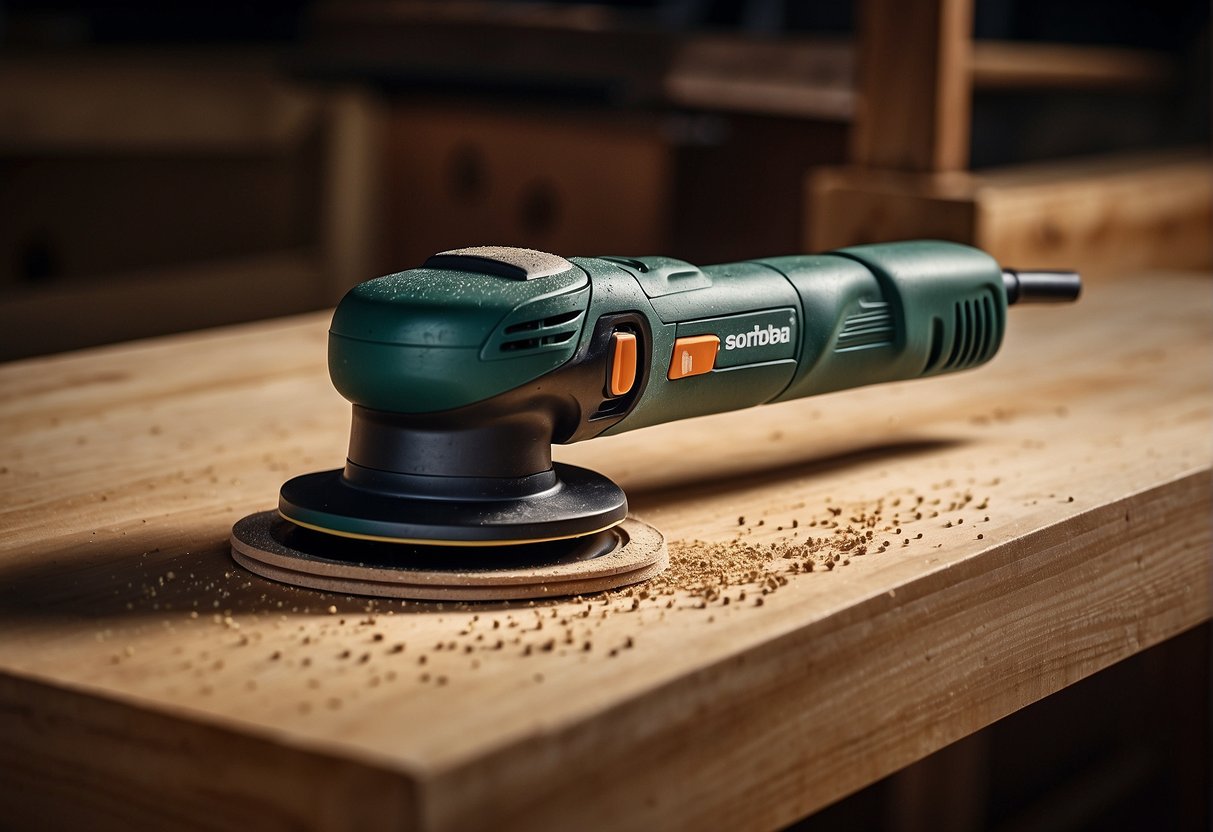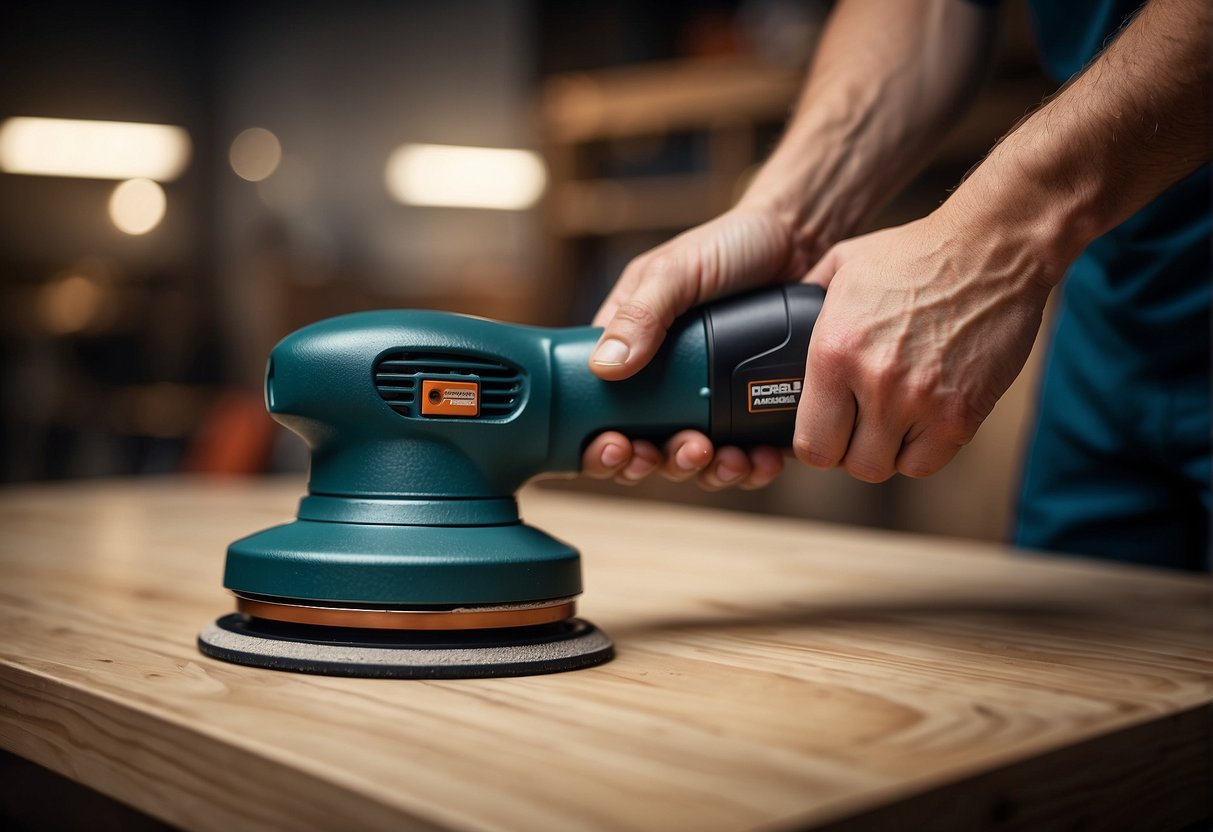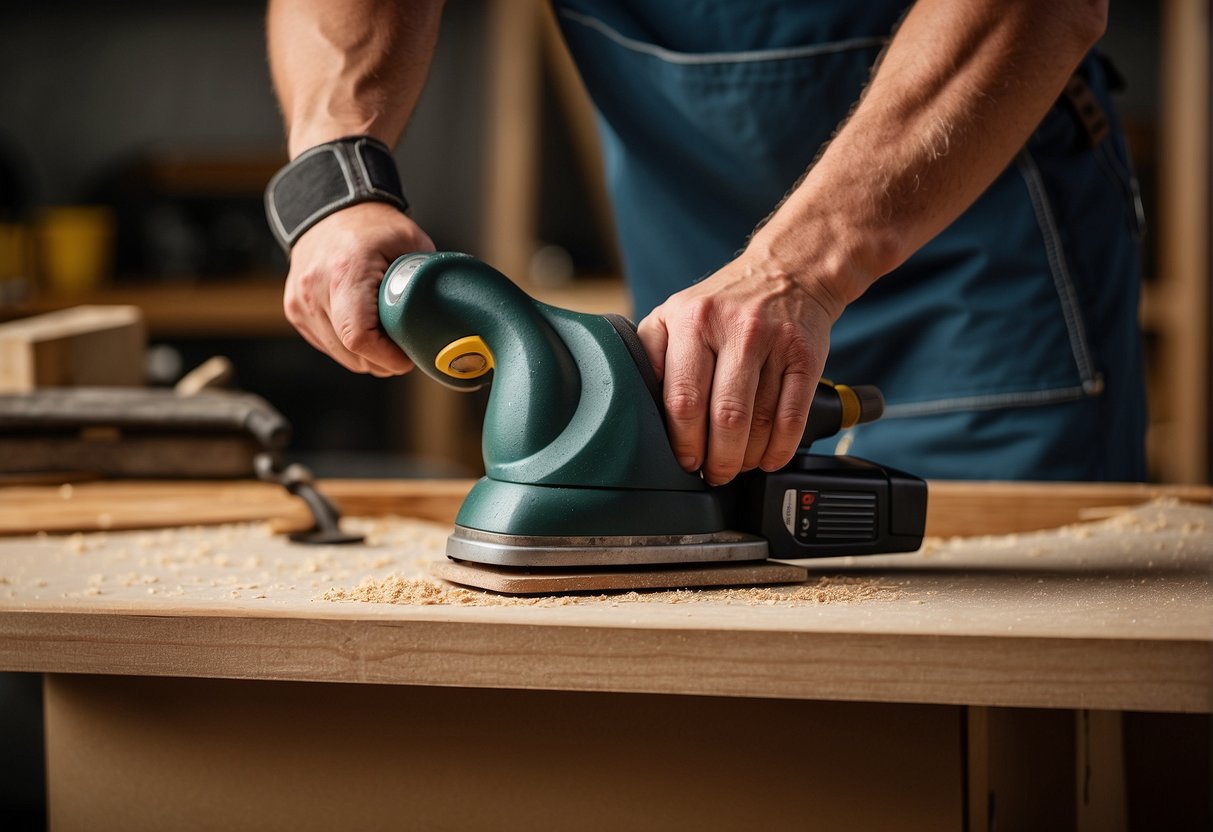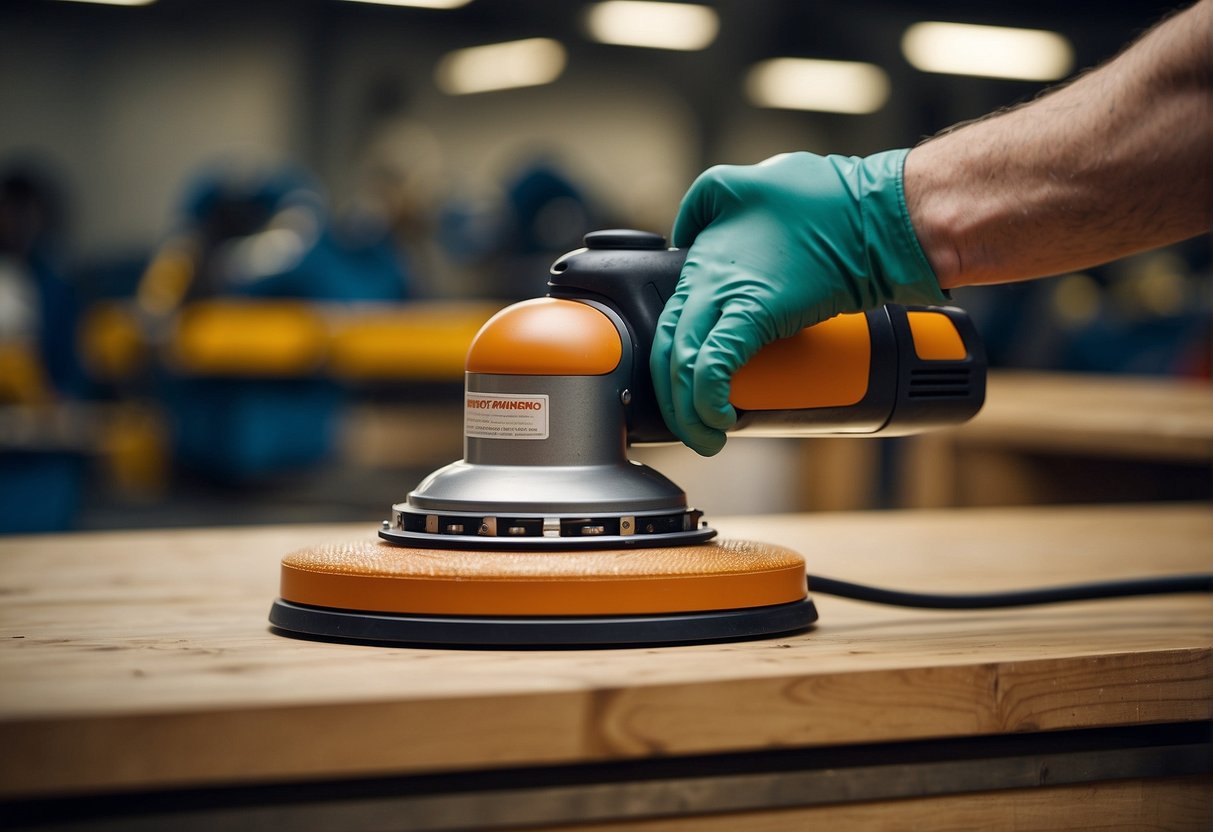When it comes to sanding, there are two main types of sanders that are commonly used: the dual-action sander and the orbital sander. While both of these sanders are used to sand down surfaces, they operate in different ways and are better suited for different applications.
The dual-action sander, also known as a random orbital sander, is a versatile tool that is great for use on a wide range of materials, including metal, wood, and fiberglass. It operates by moving the sanding pad in both a circular and oscillating motion, which helps to prevent swirl marks and other imperfections in the surface being sanded. On the other hand, the orbital sander moves the sanding pad in a circular motion only, making it better suited for sanding large, flat surfaces.
When it comes to choosing the right sander for your needs, it’s important to consider the type of material you’ll be sanding, as well as the size and shape of the surface. Additionally, you’ll want to think about the level of precision required for the job, as well as your own personal preferences and comfort level when it comes to operating different types of sanders.
Understanding Sanders
As a woodworker, one of the most essential tools you need in your arsenal is a sander. Sanders are power tools used to smooth surfaces by abrasion with sandpaper. They are designed to make your work easier, faster, and more efficient. In this section, I will be discussing the different types of sanders and their design and motion.
Types of Sanders
There are several types of sanders, each designed for specific tasks. The most common types of sanders include:
-
Belt Sanders: These sanders use a continuous loop of sandpaper that moves over two cylindrical drums. They are best suited for removing large amounts of material quickly.
-
Disk Sanders: These sanders have a circular sanding disk that rotates on a spindle. They are best suited for sanding curved surfaces and edges.
-
Random Orbital Sanders: These sanders use a round sanding pad that moves in a random orbital motion. They are best suited for finishing tasks and removing material without leaving swirl marks.
-
Dual Action Sanders: These sanders combine the orbital and rotary motion of the sanding pad. They are best suited for removing material quickly and efficiently.
Sander Design and Motion
Sanders come in different designs and motion, which affects the type of work they are best suited for. For instance, dual-action sanders have a circular motion and an oscillating motion, while random orbital sanders only have a circular motion. This motion determines the type of sandpaper you can use and how fast you can sand.
The design of the sander also affects its performance. For instance, dual-action sanders have a lightweight design, making them easy to handle and maneuver. They are also less aggressive and produce less heat, making them ideal for delicate surfaces.
In conclusion, understanding the different types of sanders and their design and motion is essential in selecting the right tool for your woodworking tasks. Belt sanders and disk sanders are best suited for removing large amounts of material quickly, while random orbital sanders are ideal for finishing tasks. Dual-action sanders are a combination of both and are best suited for removing material quickly and efficiently.
Applications and Materials
When it comes to sanding applications, both DA and orbital sanders have their strengths and weaknesses. It’s important to know which sander to use for which application to achieve the best results.
Sanding Wood and Metal
For sanding wood, both DA and orbital sanders can be used, but DA sanders are generally more powerful and efficient in removing material quickly. They are also better suited for sanding curved or contoured surfaces due to their oscillating motion. On the other hand, orbital sanders are better for finishing work on smaller surfaces such as furniture and cabinetry. They use circular sanding pads and move in a circular motion, which helps to prevent swirl marks from forming on the surface being sanded.
When it comes to metal, DA sanders are the clear winner. They are more powerful and efficient in removing paint, rust, or corrosion from metal surfaces. DA sanders use round foam pads that can be easily changed to suit the task at hand. Orbital sanders are not as effective on metal surfaces as they do not have the power or the right type of sanding pad.
Paint Removal and Finishing
When it comes to paint removal, DA sanders are the better choice. They are powerful enough to remove paint quickly and efficiently, making them ideal for automotive applications. They are also better for removing paint from contoured surfaces due to their oscillating motion. Orbital sanders can be used for paint removal, but they are not as efficient as DA sanders.
For finishing work, both DA and orbital sanders can be used. DA sanders are better for achieving a smooth finish on surfaces such as wood, metal, and plastic. They have adjustable speed options, making them more versatile than orbital sanders. Orbital sanders are better for finishing work on smaller surfaces such as furniture and cabinetry. They use circular sanding pads and move in a circular motion, which helps to prevent swirl marks from forming on the surface being sanded.
In conclusion, both DA and orbital sanders have their strengths and weaknesses. It’s important to know which sander to use for which application to achieve the best results. DA sanders are more powerful and efficient in removing material quickly, while orbital sanders are better for finishing work on smaller surfaces. When it comes to paint removal, DA sanders are the better choice.
Choosing the Right Sander
When choosing between a DA and an orbital sander, there are a few factors to consider such as control, versatility, weight, and size. In this section, I will provide some tips to help you choose the right sander for your project.
For Beginners and Enthusiasts
If you are new to sanding or a DIY enthusiast, then an orbital sander might be the best option for you. It is easy to use and provides a good finish. The orbital sander is also versatile and can be used for various sanding tasks such as removing paint, smoothing surfaces, and finishing wood.
On the other hand, a DA sander is more powerful and provides more control over the sanding process. However, it requires more skill and experience to use. If you are a beginner, it might take some time to get used to the DA sander.
Considering Size and Weight
Another factor to consider when choosing a sander is the size and weight. If you are working on a small project, then a smaller sander might be more appropriate. A smaller sander is also easier to maneuver and control.
However, if you are working on a larger project, then a larger sander might be more appropriate. A larger sander covers more surface area and is more efficient. The weight of the sander is also an important consideration. A heavier sander might be more difficult to control and maneuver, especially for beginners.
In conclusion, when choosing between a DA and an orbital sander, it is important to consider factors such as control, versatility, weight, and size. If you are a beginner or DIY enthusiast, then an orbital sander might be the best option for you. However, if you are looking for more control and power, then a DA sander might be the better option.
Operation and Techniques
As I use both DA and orbital sanders regularly, I have learned a few techniques to optimize their sanding action and achieve the desired finish.
Optimizing Sanding Action
The motion of the sanding pad is a crucial factor in optimizing sanding action. Dual Action (DA) sanders move the sanding pad in both a circular and an oscillating motion, while orbital sanders only move the sanding pad in a circular motion.
The DA sander’s dual action motion is more powerful and efficient in removing paint, rust, or corrosion on metal surfaces. The DA sander’s adjustable speed options also make it more versatile than an orbital sander.
However, an orbital sander is better for finishing work on smaller surfaces, such as furniture or cabinets. The circular sanding pads of an orbital sander provide a more even finish, which is ideal for staining or polishing.
Achieving Desired Finish
To achieve the desired finish, it’s essential to choose the right grit sandpaper. The grit of the sandpaper determines how much material is removed from the surface. Lower grits are more abrasive and remove more material, while higher grits are less abrasive and remove less material.
When sanding, it’s important to maintain a consistent speed and pressure. Sanding too quickly or with too much pressure can leave uneven marks on the surface.
To achieve a polished or buffed finish, it’s essential to use a higher grit sandpaper and apply a polishing compound. The polishing compound helps to remove any remaining scratches or marks on the surface and provides a smooth, shiny finish.
Overall, both DA and orbital sanders have their unique advantages and disadvantages. Choosing the right sander for the job depends on the task at hand and the desired finish.
Maintenance and Safety
Sander Care
Taking care of your sander is essential to ensure it lasts long and works efficiently. After every use, you should clean your sander thoroughly. This involves removing any dust, debris, or residue that may have accumulated on the sanding pad, the dust collection port, and the motor housing. A clean sander will work more efficiently and produce better results.
Another important aspect of sander care is lubrication. Lubricating your sander regularly will help reduce friction and wear on the moving parts, such as the bearings and gears. Consult your sander’s manual for specific instructions on how to lubricate it properly.
Safety Precautions
When using a sander, it is important to take safety precautions to avoid injury. Here are some safety measures to keep in mind:
- Always wear protective gear such as safety glasses, a dust mask, and earplugs.
- Make sure the sander is turned off and unplugged before making any adjustments or changing the sandpaper.
- Keep your hands and fingers away from the moving parts of the sander.
- Use a dust collection system or wear a dust mask to avoid inhaling dust particles.
- Do not use the sander near flammable materials or liquids.
- Do not force the sander to do more than it is capable of. Let the sander do the work, and do not apply excessive pressure.
By following these maintenance and safety tips, you can ensure that your sander is in good working condition and avoid any injuries while using it.
Frequently Asked Questions
What are the advantages of a dual action sander for auto body work?
A dual action sander, also known as a DA sander, is an excellent tool for auto body work because it can remove paint, rust, and corrosion from metal surfaces. DA sanders have adjustable speed options, making them more versatile than orbital sanders. Additionally, DA sanders use round foam pads, which allows for a more even surface finish.
Can a random orbital sander be effectively used for body work?
While random orbital sanders are not as powerful as DA sanders, they can still be used for auto body work. Random orbital sanders are better suited for finishing work on smaller surfaces, and they use circular sanding pads. However, if you are working on a larger surface or need to remove a lot of material, a DA sander is a better choice.
What is the primary use of a dual action sander?
The primary use of a dual action sander is for sanding and finishing surfaces. DA sanders are commonly used in auto body work, woodworking, and metalworking. They are versatile tools that can be used for a variety of tasks, including sanding, polishing, and buffing.
How does an orbital sander compare to a regular sander in terms of performance?
Orbital sanders are different from regular sanders because they use a circular sanding motion instead of a back-and-forth motion. This circular motion allows for a more even finish and reduces the risk of leaving swirl marks on the surface. Orbital sanders are also typically lighter and easier to maneuver than regular sanders.
What does ‘DA’ in DA sander stand for?
‘DA’ stands for ‘dual action’. This refers to the unique way that the sander operates, which sets it apart from traditional orbital sanders. A dual action sander uses both a circular motion and an orbital motion to sand surfaces, resulting in a smoother finish.
Is it possible to use a DA sander for general sanding tasks?
Yes, it is possible to use a DA sander for general sanding tasks. DA sanders are versatile tools that can be used for a variety of tasks, including sanding, polishing, and buffing. However, if you are only doing general sanding tasks, a regular orbital sander may be a more cost-effective option.

Hi, I’m Sal Muller of Tooltrip.com. My DIY experience led me to understand essential power tools for home projects. Tooltrip.com guides enthusiasts and professionals in choosing right tools for any job. I provide concise top tool reviews for easier, efficient DIY.





